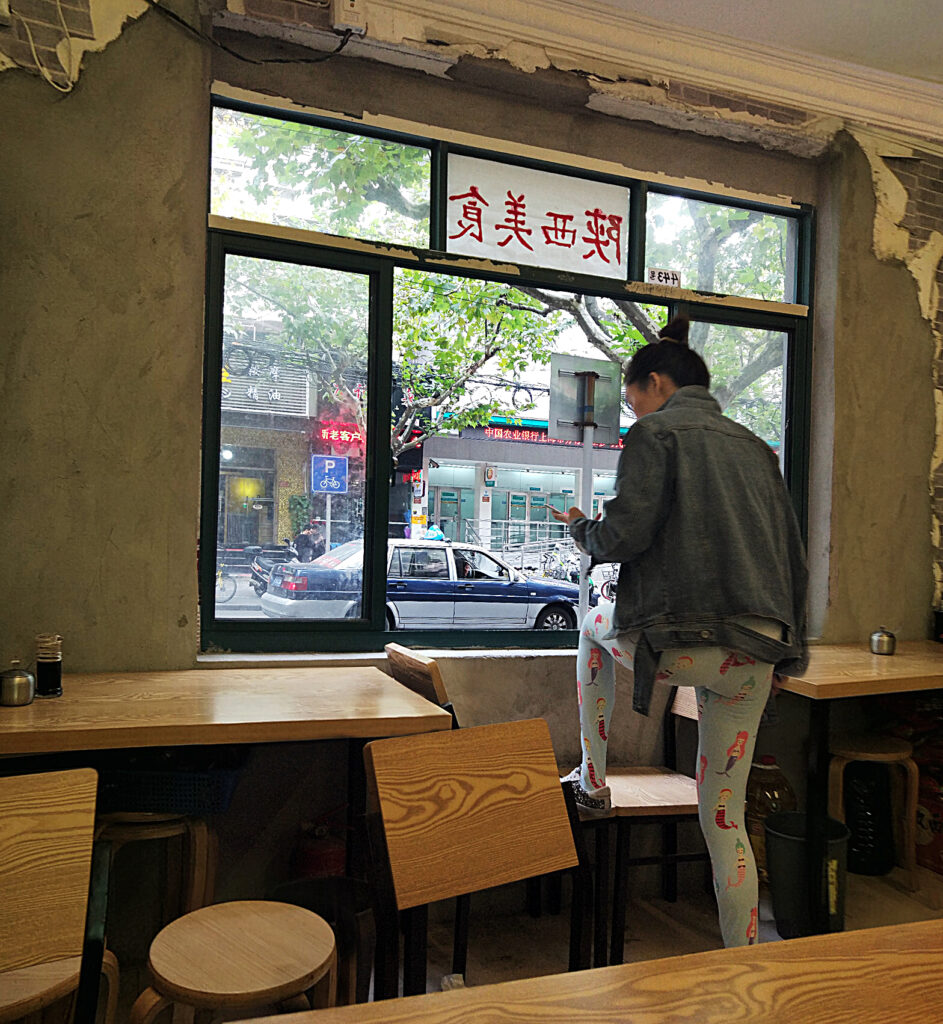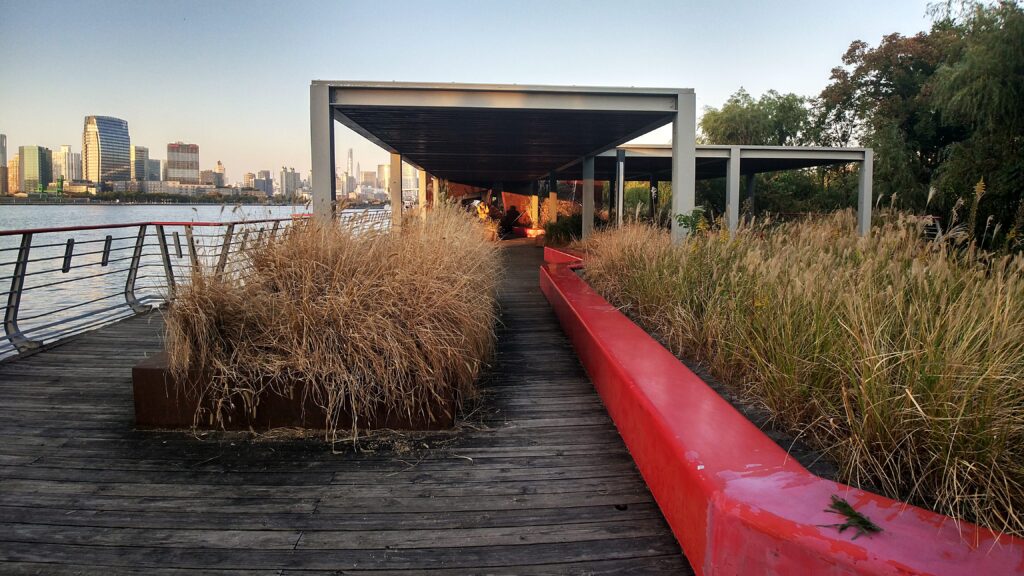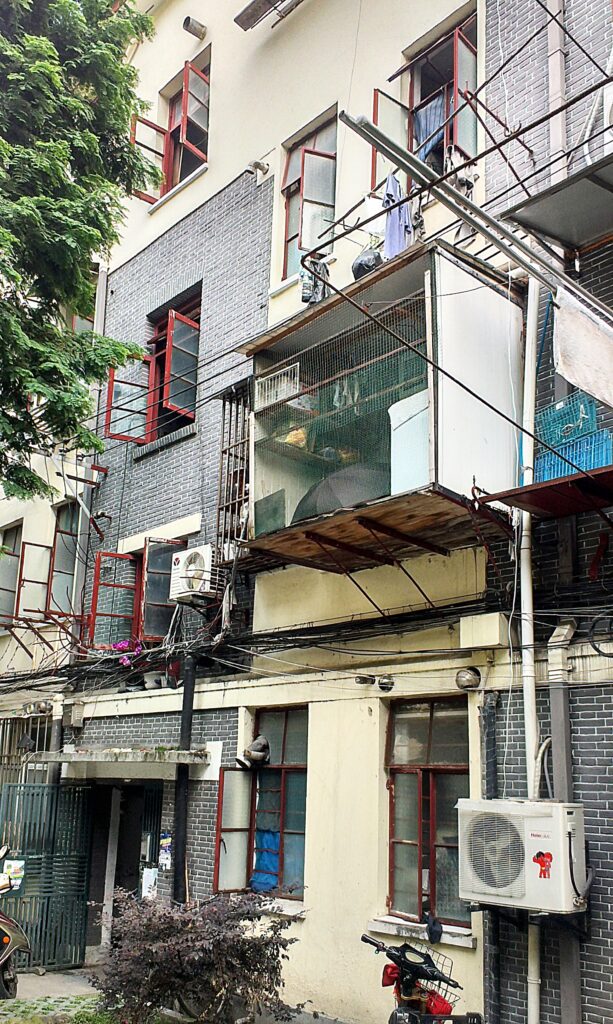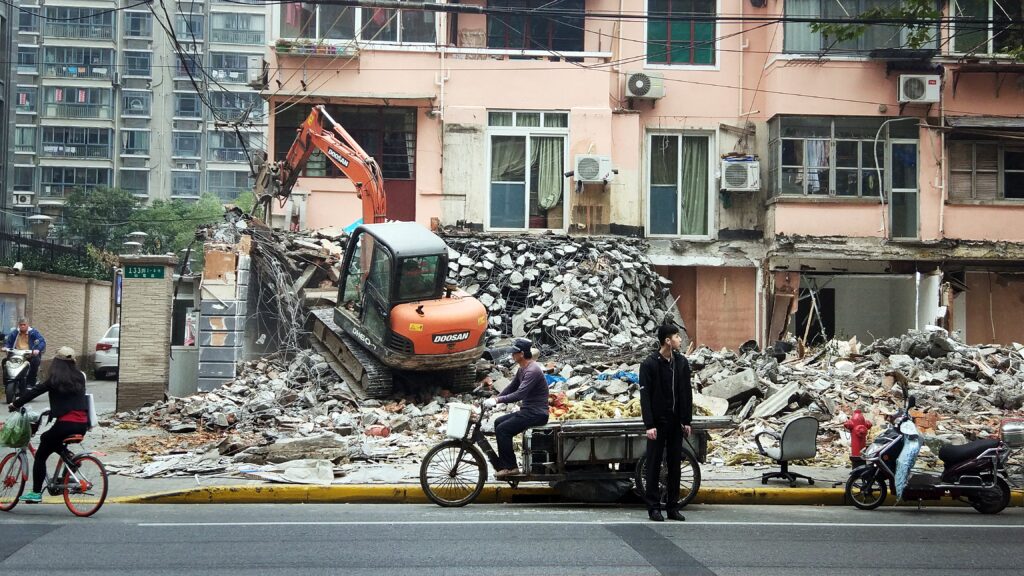When looking at China with an open mind, there are quite a few lessons to be learned.
It is quite habitual in Shanghai that they ask about the visitor’s origin. Based on the sound of its name, Estonia is mostly placed either in Ethiopia or the Balkans. It is probably impossible to find a person in Estonia who has never heard of China or even Shanghai. The megastate’s city with its 25 million residents gives plenty of topics to talk about and it may happen that nobody bothers to check the validity of the hearsay.
Where’s the problem?
Argentinian architect Pablo Castro talked about his experience in China at the Shanghai Study Centre of Hong Kong University: designing a kindergarten in Beijing. We all know about the one-child policy in China resulting in families mostly raising only one child. Thus, architects found a starting point: the building was to relieve the tensions experienced by lonely children when joining a large group for the first time. However, what the architects did not know was that most children in China go to a nursery and actually interact with their peers from early on. So, there is actually no such problem as the architects had imagined.
It is quite typical that a foreign architect relies on his obsession to fix things that actually do not need fixing. As a result, there are pretentious and misplaced buildings. And it once again confirms their prejudice that foreign architects are great masters of form. People are highly particular about the functions and functioning of the building and they would not actually like to allow strangers to design that. Their architectural questions are too different from the Western world and working with foreigners without any background knowledge is too tedious. However, when delving into the secrets of the Chinese culture, you may find exciting solutions or unexpected connections instead of problems.
Safety First, Then Life, or Has the Control Got out of Control?
Regarding control, the local authorities are more than experienced and it is naturally justified with safety. In the name of safety, the Chinese have given up swimming on the beach, climbing on the cow-shaped attractions placed on the lawn, walking on the amazing roof gardens at the natural history museum, the dimly-lit home street… Life will happen later. At present it is merely safe.
As a result, Shanghai, the most European of Chinese cities, is at times cleaner than many European cities. Crime and other problems are often justified in Europe by immigration. Although the majority of Shanghai’s population consists of immigrants, during my years here I have never noticed a city district where I would not dare to go for a walk with an expensive camera. Law enforcement begins already at the airport as every visitor is entered into the facial recognition system, some of the cycling lanes in the city have cameras that can reportedly recognise even crooks riding in the wrong direction with a hoodie over their head. Security cameras with blinding floodlights were installed overnight in the streets of the megacity’s cosy albeit slightly dirty micro-district Dongan. Was it due to an incident in the city of Nanchang in Southern China in April when they accidentally caught a fugitive enjoying a pop concert among tens of thousands of people thanks to the facial recognition camera? We can only speculate.
On the one hand, it is frightening, then again, they have created an environment where even headphones left on the underground will find their way back to the owner. It seems that a significant number of people feel obligated to take the lost items to the security guard.

Why can the Canteen be Entered Only through a Window?
Control seems to be executed in China on the principle of yin yang balance. Often they don’t rush into taking control over a specific field and allow people some freewheeling first. A good example from recent years is the so-called bricking up movement taking place in Shanghai and Beijing. It all started with the economic liberalisation some twenty years ago allowing private entrepreneurship that often remained out of the authorities’ reach. It resulted in the supercool variety of shops and restaurants with most of them located at places unsuitable for the function, for instance, in residential premises. The customers outraged by the closure probably did not think about how great it is to live by the ventilation shaft of a dirty but really nice shashlik restaurant or in a romantic narrow street lined with old buildings that became noisy and popular among foreigners overnight.
They have now started to rectify the error. Small shops have been closed down in numerous districts and the bustling city centre streets are replaced by quiet backstreets. In some cases, they have restored the flats on the ground floor that had been originally planned there but failed to connect with the surroundings. For a few months we entered our customary Xian noodle place through the window that was made to replace the door within one day. There are two chairs under the window on either side of the wall to ease the climb. The restaurant will soon move. Having come to search for a better life in the city, the employees will now return to their province as opening a new place in the city has been made highly difficult.
When will they Plant Trees in our Street?
There can be absolute control only in a totalitarian state where the orders coming from the above are never publicly disputed. In his Ted-talk, the Shanghai venture capitalist Eric X. Li highlights the difference between how people get near the decision-making in the West and in China. It is not easy to become a politician in China, you need to work up to it from the grassroot level for decades. Athletes with no university education could not possibly participate in making important decisions as is the case in Estonia. It must be admitted that going through the given trials has generated some clever minds in the governance. Also the understanding of the importance of spatial decisions is better evident in the consciousness of the state leaders in China than in Estonia. It is similarly very easy to implement the given decisions due to the strong hierarchy of power and the consequences are immediately discernible. The space is transforming here at an incredible speed and often radically, but unfortunately you cannot make an omelette without breaking an egg.

There was a huge accident in Shanghai in September as a signboard fell from a small shop in the main street killing three people. The regulation on the objects placed at height was decisively passed and about half of the signboards in the city were replaced within a couple of weeks. When travelling to the city of Suzhou near Shanghai, the cars and mopeds honking in the rush hour make your head hurt. There used to be similar background noise in Shanghai a few years ago until the government decided to end such behaviour. The city changed in a flash.
Similar draconian measures were used also for establishing most of the parks in Shanghai. Coming from Estonia, these are really pleasing to the eye and soul. If for the most part, the city is densely filled with buildings, room has been made (sic!) for parks at short intervals. Landscape architecture competitions are held in many of the Chinese cities, an old factory complex or residential area is demolished and the best park solution ideas are searched for. Once the decision is made that a green area must be established, it is constructed straightaway. Life-size trees are brought from tree nurseries by cars and the wild parks with huge trees that you see in competition entry pictures actually look like that from the opening day. An example here would be Houtan Park in Shanghai designed by the Chinese landscape architecture office Turenscape. When taking a walk in the wetland part of the park, you feel as if in the wilderness although the entire area with all the water plants was actually constructed and planted there only recently for practical purposes to treat the water from the Huangpu River passing through the city. About ten years ago the place accommodated only industrial and harbour facilities made of stark concrete.
Life-size trees are brought from tree nurseries by cars and the wild parks with huge trees that you see in competition entry pictures actually look like that from the opening day.
Parks certainly play a more important role in China than in wealthier countries with lower population density. There are just so many people here with no privacy in the crowded homes. So, middle-aged people gather in parks in the evening to dance or exercise together. There is often an American pop song or even a Christmas song playing in the background and it isn’t actually even important – the movements are the same anyway. It does not matter if its freezing or scorching outside, there are dancers everywhere.
A Normal Chaos?
In the context of the overall regulations, the traffic in Shanghai may seem somewhat controversial. The green light only applies to drivers and at first, getting across the road at a zebra crossing as a pedestrian is quite a challenge. Even on the sidewalk, you may get in a moped’s way. However, when you start to observe the traffic, you notice that the speed is low and the cars are moving in slow motion. Reaching up to 25 kilometres per hour, mopeds are a highly popular and inexpensive means of transport in Shanghai taking little space and accommodating also a child and a companion, if necessary. Most people tend to use the underground, electric buses, mopeds or bikes for their daily journeys. Rental bikes have experienced explosive growth in the recent years in China: they may be found at every corner, the cost is close to nothing and the cycling path network densely covers the entire city. Bikes can be used to transport yourself or your children, but also larger objects and even furniture. People are very crafty.
The great thing about such traffic is that everybody somehow manages. Nobody frowns when ten cars need to stop due to a jaywalker. They make a highly economical use of the space and find a place for everything, even for trees – the most remarkable phenomenon in the urban space in Shanghai. It does not matter whether there is little or plenty of room, you cannot really find a street without trees. They are obviously planted at their full height as then the result is immediately visible and hooligans cannot break them easily either.
When Can I Move from the Slum to My New Home?
All that seems like a chaos here actually entails proper order. We may get outraged when a pedestrian casually throws a package of cigarettes on the ground although the bin is only ten metres away. Within two minutes, however, a janitor appears from nowhere to clean it all up again. And that’s how it works.
In the larger scale, the janitor’s responsibilities have so far been born by the state. Old districts governed by a kind of a chaos have usually been “cured” with bulldozers and new high-rises. The old Shanghai, romantic and slummy with its gloomy streets has always been a place to wander around in search for picturesque shots. The laundry hanging above the street usually hints at the approximate age of the residents and peeking through the windows, you can get a glimpse of a family meal. Home has always been a place where people can express their spatial creativity and expand their living space at the expense of the surroundings.
Unfortunately, the given romantic feel often lacks a sewage system as well as other amenities. The sink, sometimes also the entire kitchen, is located in the lane. It is a romantic dream but out-dated for actual urban living. That’s why the locals or at least their descendants have come to consider the “maintenance” of the chaos with bulldozers in a positive light – the amortised residential areas may then be replaced with several flats with mod cons.
Also heritage protection has recently come to acquire a new meaning in China. There is increasingly more media coverage of campaigns where old buildings are polished up and equipped with mod cons. For instance, in case of the pilot project to renovate the micro district of Chūnyánglǐ (Spring Sun!) in Shanghai, relatively few residents had to be moved, only as many as needed to build kitchens and showers for other flats. The old atmosphere and as many historical details as possible were generally retained and it may be thus called restoration also in the Estonian sense of the word.
Constant Change
China is in the state of constant change with the transformations often taking place at incredible speed. The Shanghai you saw a year ago may be considerably different from its present state. Naturally, there are some essential phenomena and principles that are more rooted, however, it’s time to let go of your prejudices and see and experience it yourself.

TÕNIS KIMMEL is an architect with previous experience in architecture office KOKO and Tartu City Government, in the past nine years, he has lived in Shanghai and worked for a while at BHI studio.

INKE-BRETT EEK’s career took off at architecture office Sport. At present she is on an East Asian tour, including four months at the architecture office Agence Ouvray.
HEADER photo by Inke-Brett Eek
PUBLISHED: Maja 95 (winter 2019), with main topic Drift








